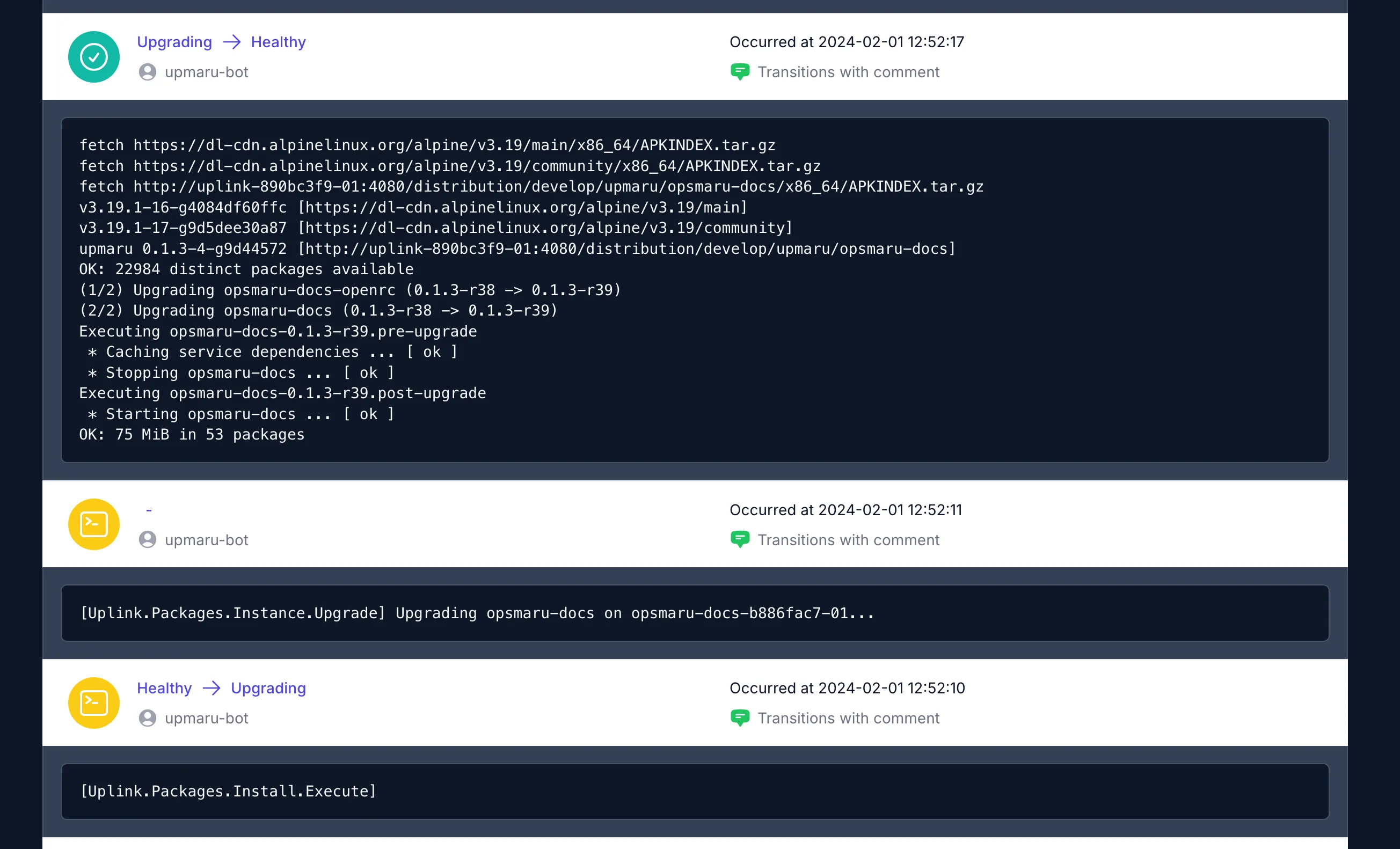Uplink Engine
Uplink is a tool that operates your cluster and application. When you bootstrap your platform using the Infrastructure Builder, Uplink is the first container that runs. It provides functinality that keeps your cluster running smoothly and automates away most of the complexities in deploying and upgrading your application.
Below are some of the features that Uplink provides.
Managing Caddy
Inside the Uplink container there are 2 main processes.
uplink- This is the Uplink app.uplink-caddy- This is a specially built version of Caddy that serves your application.
It’s responsible for managing SSL certificates and serving your application. Uplink communicates with OpsMaru and ensures all the configurations for Caddy are automatically updated when something changes.
Hosting Packages
We’ve mentioned before that your application / source code never touches our platform. This means everything is served from within your cluster. When a deployment happens, Uplink will automatically download the built archive of your application, set it up, and trigger an upgrade on the running containers. When application containers are bootstrapped or upgrade, you can see evidence of this in the logs.
Here is an example:
fetch https://dl-cdn.alpinelinux.org/alpine/v3.19/main/x86_64/APKINDEX.tar.gzfetch https://dl-cdn.alpinelinux.org/alpine/v3.19/community/x86_64/APKINDEX.tar.gzfetch http://uplink-890bc3f9-01:4080/distribution/develop/upmaru/opsmaru-docs/x86_64/APKINDEX.tar.gzv3.19.1-16-g4084df60ffc [https://dl-cdn.alpinelinux.org/alpine/v3.19/main]v3.19.1-18-gdafb13ff2a9 [https://dl-cdn.alpinelinux.org/alpine/v3.19/community]# Uplink is hosting your packageupmaru 0.1.3-7-gc9b0f60 [http://uplink-890bc3f9-01:4080/distribution/develop/upmaru/opsmaru-docs]OK: 22984 distinct packages available(1/2) Upgrading opsmaru-docs-openrc (0.1.3-r40 -> 0.1.3-r41)(2/2) Upgrading opsmaru-docs (0.1.3-r40 -> 0.1.3-r41)Executing opsmaru-docs-0.1.3-r41.pre-upgrade * Caching service dependencies ... [ ok ] * Stopping opsmaru-docs ... [ ok ]Executing opsmaru-docs-0.1.3-r41.post-upgrade * Starting opsmaru-docs ... [ ok ]OK: 76 MiB in 53 packagesIn the example log above, notice that the package is being hosted in the Uplink instance that’s running inside your cluster http://uplink-890bc3f9-01:4080/distribution/develop/upmaru/opsmaru-docs.
Application Lifecycle
Uplink also orchestrates and manages the lifecycle of your application. It’s responsible for deploying your application, upgrading it, scaling it, and ensuring it’s always running.
If anything fails during an upgrade, Uplink will provision a new container running your application automatically.

Service Discovery
Uplink provides endpoints that can be used to discover services running in your cluster. This means your application can poll the endpoint to figure out which other services running in the cluster may be relevant. For example elixir / phoenix clustering utilizes service discovery to connect to other nodes.
